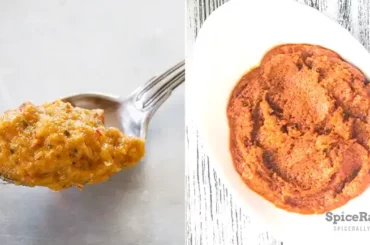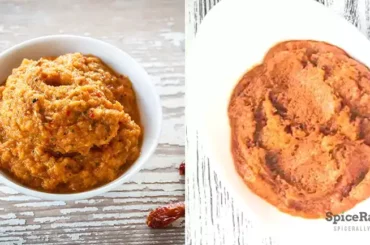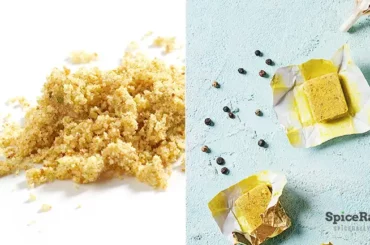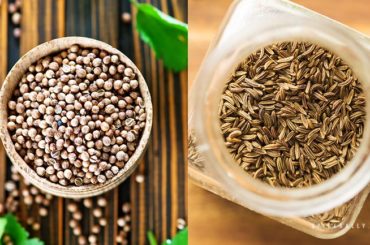Panang curry paste is one of the most renowned Thai culinary ingredients popular for its complex flavor profile. If you can’t find this on the store shelves, these substitutes for Thai Panang curry paste will help to replicate the flavors.
The best alternatives to use instead of the panang curry paste include:
- Homemade panang curry paste
- Thai Massaman curry paste
- Thai yellow curry paste
- Thai red curry paste
- Thai green curry paste
- Thai Tom Yum paste
- Curry laksa curry paste
So, read along to learn more about these options and how to use them when the original product is not around.
07 Excellent Substitutes For Thai Panang Curry Paste
If you’re a Thai food enthusiast, panang curry must be one of the foods on your list. The foundation of this delicious dish is built with the use of panang curry paste, which is a flavorful, rich, and creamy curry paste.

This curry paste essentially sets itself apart from the rest of the basic Thai curry paste due to the complexity of the flavors. It is typically made using dry-roasted and fresh spices, combined with other herbs and flavorings. These ingredients include:
- Thai chiles
- Galangal
- Lemongrass
- Shrimp paste
- Kaffir lime peel and leaves
- Peanuts
- Garlic
- Coriander seeds
- Salt
- Black/white peppercorns
- Green cardamom
- Shallots
- Coriander roots
Although the main purpose of the panang curry paste is to serve as the primary flavor provider of traditional Thai panang curries, it is also applicable to many other dishes. If you stay out of Thailand, sometimes you might have trouble finding this curry paste that needs restocking.
In that case, the substitutes we wish to discuss in this article will help you replicate the flavors when using the panang curry paste as a secondary ingredient. Most of the substitute options we have discussed below are easily accessible and you can even put them together at home if the ingredients are available. So, let’s check them out and see what suits your needs best.
01- Homemade Panang Curry Paste
You’re so blessed if you can often treat your family with homemade goodness. So, if you cannot find or reach out to your ordinary shop-bought panang curry paste, why not make your own fresh batch at home?
Making this panang curry paste at home is not at all challenging when you have the right ingredients. You can buy the ingredients in one place if you visit an Asian store. Homemade panang curry paste is as good as the store-bought options or even comes out better since you can control what goes in.
The best thing is, you can use it in anything and everything that requires panang curry paste in the initial recipe. You can substitute this alternative straightly as in a 1:1 ratio
Pros of using Homemade Panang Curry Paste:
- Comes out flavorful and fresh, just to match your preference
- A similar taste, texture, color, and quality can be obtained just like you buy from the store.
- Can be a pretty healthy option for commercially made products since no artificial additives are included.
- Can be used with versatility from any traditional panang curry to other cooking applications.
Cons of using Homemade Panang Curry paste:
- Can take time and effort to make the curry paste at home.
- The shelf life can be less than the store-bought options.
- Sometimes, you might find it difficult to get the ingredients required to make homemade panang curry paste in local stores such as galangal, kaffir lime leaves, etc.
02- Thai Massaman Curry Paste
The Thai massaman curry paste is the next best option to use when panang curry paste is not around. This alternative and our topic leader have very subtle differences that we even sometimes fail to recognize what they are.
However, the base ingredients used in the massaman curry paste are very similar to that of the panang curry paste which includes Thai chiles, galangal, and lemongrass, along with other dry-roasted and fresh spices and herbs. The massaman curry paste holds more heat and is a bit influenced by Indian and Middle Eastern flavors.
It may also lack the creaminess of our topic leader since you will not find the inclusion of peanuts in this substitute. But still, this is a great replacement to replicate the original flavors of the panang curry paste. You can go for a ratio of a 1:1 substitution or start with a small amount at the beginning and then adjust the amount accordingly.
Pros of using Thai Massaman Curry Paste:
- The same primary flavor element can be obtained
- Is great when incorporated with coconut milk-based dishes
- Can be used in many recipes that originally calls for panang curry paste
- Available even outside Thailand and can be bought under several brand names.
Cons of using Thai Massaman Curry Paste:
- Those who love the creaminess of panang curry paste may not like the bold flavor of the massaman curry paste
- Can be a bit more intense than the panang curry paste
- Is not a good choice to be used in traditional panang curries
03- Thai Yellow Curry Paste
Our next best preference is the popular Thai yellow curry, which is widely used across Thailand to be used in their traditional yellow curries. This is also one item out of the three basic curry pastes featured in Thai cuisine that holds a strong curry punch.
Thai yellow curry paste shares the same base flavor profile as our topic leader. While ingredients like lemongrass, Thai chiles, shrimp paste, coriander, cumin, galangal, etc., make the primary flavor, some variations of this option also contain spices like cinnamon, fenugreek, cardamom, cloves, etc.
Turmeric and curry powder are also special ingredients featured in this option, making it much closer to the taste of panang curry paste. The mildness and robust curry kick can be compared to that of our topic leader.
But sometimes you may find this option to have a more vibrant yellowish color while the outcome of the panang curry paste tends to be more reddish. However, this can work well in most recipes that originally require panang curry paste when used in a 1:1 ratio or adjusted upon your preference.
Pros of using Thai Yellow Paste:
- The same base flavor can be acquired.
- Readily available even outside Thailand.
- Can be used in most applications to get a closer flavor replication.
- It gives a beautiful golden-yellow color to your dishes, making it more visually appealing.
Cons of using Thai Yellow Curry Paste:
- It might lack the creaminess of panang curry paste since typically no peanuts are included.
- May give a different color when compared with the original product.
- You might not savor the underlying taste notes that you usually get in the panang curry paste.
04- Thai Red Curry Paste
The curry paste king of Thai cuisine will come to your rescue when you don’t have the panang curry paste around. The Thai red curry paste is extensively used in many Thai dishes, owing to its vibrant color and flavor profile.
Since Panang curry paste is a mild, yet complex variety of red curry paste and shares a similar fundamental flavor profile, you can use the red curry paste as one of its substitutes. In addition, it also contains most other ingredients such as coriander seeds, cumin seeds, shallots, shrimp paste, etc.
Some variations even contain tomato paste so that it can be compared to the tanginess of the panang curry paste you usually get. However, the red curry paste holds an intricate heat with a rawly flavorful character, while the creaminess of the panang curry paste is not present in it.
With regard to all the facts, Thai red curry paste can be concluded as a top replacement for our topic leader to use in dishes that call for panang curry paste as a secondary ingredient. You can use this alternative in a small amount at the beginning and then gradually increase the amount depending on the dish or your preference.
Pros of using Thai Red Curry Paste:
- Can get a similar flavor due to the identical base flavor profile.
- Widely available even outside of Thailand.
- Offers an incredible depth of flavor with a lovely color to any dish.
- Pairs well with a lot of ingredients even outside of meat, fish, and seafood.
Cons of using Thai Red Curry Paste:
- Those who like the complex spiciness and mild heat of the panang curry paste might find the red curry paste to be a bit intense.
- Fails to give the rich and creamy texture of the panang curry paste since no peanuts are included.
- Is not a suitable replacement for traditional panang curries since the identity of “Panang” cannot be obtained.
05- Thai Green Curry Paste
Another easy and effective substitute for the panang curry paste is the Thai green curry paste. This is also another common ingredient in Thai cooking, famous for its unique herbal and spiced punch of flavor.
Like most other substitutes we have shared in our list, this alternative also shares the same set of ingredients to compare with the base flavor. It also contains coriander roots, shrimp paste, shallots, white pepper, coriander seeds, and cumin seeds to make a better flavor match with our topic leader.
Nevertheless, the green curry paste also comes together with ingredients like coriander leaves and Thai basil to have its distinctive herbal undertone. And, it usually contains green chiles instead of red ones, while it does not typically contain peanuts.
However, this would still be good enough to switch places with the panang curry paste in recipes that call for the original product as a subordinate element. It is always a good idea to start with a little amount and adjust the quantities as you build up the taste of the dish.
Pros of using Thai Green Curry Paste:
- This option is widely available in most places, even outside of Thailand.
- The lovely herbal overtones can be a bonus for those who love the flavor of the greens.
- Due to the similarity of the base flavor profile, this option can work in many dishes that originally called for the panang curry paste.
Cons of using Thai Green Curry Paste:
- The creaminess and richness of the peanuts can lack along with the complex flavor of the spices.
- Thai green curry paste is not the one for those who don’t like the herbal overtones.
- A change of color should be expected since this option will give a more greenish tone to the dishes.
- Is not a good swap for traditional panang curries.
06- Thai Tom Yum Paste
Thai tom yum paste is a popular ingredient in Thai cuisine, used as an instant flavor booster to their traditional Tom Yum soup recipes. The reason we chose this option as an alternative to panang curry paste is again accountable for its primary ingredients.
This paste includes and shares many common ingredients such as garlic, galangal, lemongrass, Thai red chiles, shrimp paste, and shallots. It also contains additional ingredients like dried shrimp, tamarind paste oil, sugar, fish sauce, etc.
This makes the tom yum paste a perfectly balanced flavor profile so that you can use it in many dishes instead of the panang curry paste. We recommend using this substitute in place of our topic leader especially when making soups, stir-fries, stews, sauces, and dips. It is ideal to begin with a smaller amount and adjust the quantities as required.
Pros of using Thai Tom Yum Paste:
- Most ingredients can give a similar base flavor.
- The well-balanced flavor profile will make your dishes more flavorful
- The heat is not overwhelming.
Cons of using Thai Tom Yum Paste:
- Lacks the creaminess of the peanuts and spiciness of the dry-roasted spices you usually get in the panang curry paste.
- Including souring agents like tamarind paste and lime juice can give tart undertones which might not go well with the flavor profile of the panang curry paste.
- Can be a bit hard to find outside of Thailand.
07- Curry Laksa Curry Paste
Laksa paste, better known as the curry laksa curry paste is another excellent alternative to use instead of our topic leader. If you have leftover laksa paste in your refrigerator, then here’s your chance to introduce it in a new way to your Thai or Asian-inspired dishes!
Curry laksa curry paste has a robust curry note that shares a lot of common ingredients with panang curry paste. In addition to red chiles, galangal, cumin, coriander, shrimp paste, etc. It also typically contains Macadamia or candlenuts to give a creamy texture.
This is an absolute plus point for those who want the exact texture from a substitute. This blend is very flavorful and is ideal to use as a replacement in many dishes that require our topic leader as a main flavor component. Feel free to use the curry laksa curry paste in a 1:1 ratio. But if you’re not very certain about using substitutes, you can start with a smaller quantity and increase the amount as you proceed.
Pros of using Curry Laksa Curry Paste:
- Can obtain a richer, more flavorful taste along with the base flavor.
- The inclusion of the nuts will give a comparable thickness.
Cons of using Curry Laksa Curry Paste:
- Will not have the complex spiciness you usually get in the panang curry paste
- Can be a bit of a challenge to find in ordinary shops outside of Asia.
Cook Your Thai Meals Like A Pro When You Have The Right Substitutes For Thai Panang Curry Paste!
You know our ultimate goal is to educate with all the culinary knowledge we have and drag you out from all the cooking concerns you face in your kitchen. Therefore, we hope you got your answer from this episode as we have covered the best substitutes for panang curry paste for you.
As you see, several alternative curry pastes can replicate the flavor of our topic leader. But, you have to choose wisely, pay attention to the pros and cons, and pick the best for your cooking application. So, enjoy a delicious Thai family meal!




